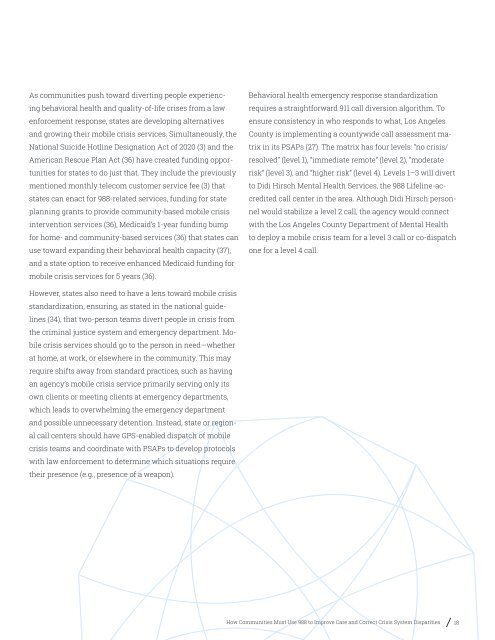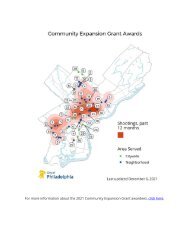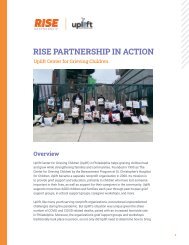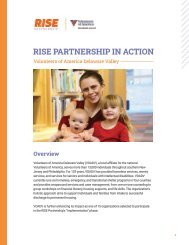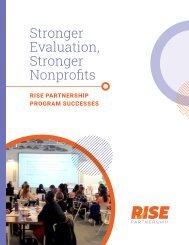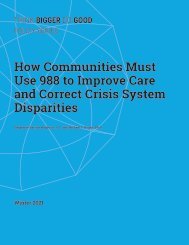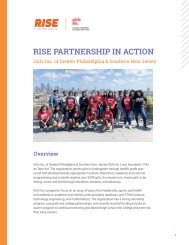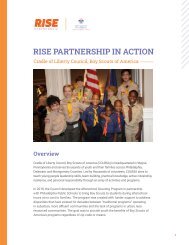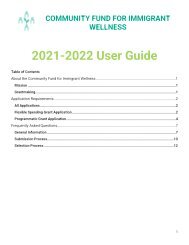Test Add using WordPress E-paper JB Local Environment
JB Local Environment
JB Local Environment
Create successful ePaper yourself
Turn your PDF publications into a flip-book with our unique Google optimized e-Paper software.
As communities push toward diverting people experiencing<br />
behavioral health and quality-of-life crises from a law<br />
enforcement response, states are developing alternatives<br />
and growing their mobile crisis services. Simultaneously, the<br />
National Suicide Hotline Designation Act of 2020 (3) and the<br />
American Rescue Plan Act (36) have created funding opportunities<br />
for states to do just that. They include the previously<br />
mentioned monthly telecom customer service fee (3) that<br />
states can enact for 988-related services, funding for state<br />
planning grants to provide community-based mobile crisis<br />
intervention services (36), Medicaid’s 1-year funding bump<br />
for home- and community-based services (36) that states can<br />
use toward expanding their behavioral health capacity (37),<br />
and a state option to receive enhanced Medicaid funding for<br />
mobile crisis services for 5 years (36).<br />
Behavioral health emergency response standardization<br />
requires a straightforward 911 call diversion algorithm. To<br />
ensure consistency in who responds to what, Los Angeles<br />
County is implementing a countywide call assessment matrix<br />
in its PSAPs (27). The matrix has four levels: “no crisis/<br />
resolved” (level 1), “immediate remote” (level 2), “moderate<br />
risk” (level 3), and “higher risk” (level 4). Levels 1–3 will divert<br />
to Didi Hirsch Mental Health Services, the 988 Lifeline-accredited<br />
call center in the area. Although Didi Hirsch personnel<br />
would stabilize a level 2 call, the agency would connect<br />
with the Los Angeles County Department of Mental Health<br />
to deploy a mobile crisis team for a level 3 call or co-dispatch<br />
one for a level 4 call.<br />
However, states also need to have a lens toward mobile crisis<br />
standardization, ensuring, as stated in the national guidelines<br />
(34), that two-person teams divert people in crisis from<br />
the criminal justice system and emergency department. Mobile<br />
crisis services should go to the person in need—whether<br />
at home, at work, or elsewhere in the community. This may<br />
require shifts away from standard practices, such as having<br />
an agency’s mobile crisis service primarily serving only its<br />
own clients or meeting clients at emergency departments,<br />
which leads to overwhelming the emergency department<br />
and possible unnecessary detention. Instead, state or regional<br />
call centers should have GPS-enabled dispatch of mobile<br />
crisis teams and coordinate with PSAPs to develop protocols<br />
with law enforcement to determine which situations require<br />
their presence (e.g., presence of a weapon).<br />
How Communities Must Use 988 to Improve Care and Correct Crisis System Disparities 18


